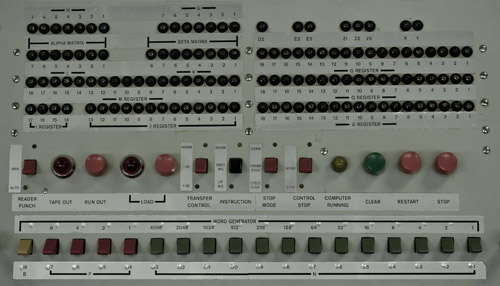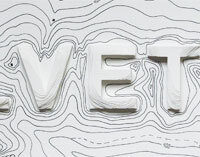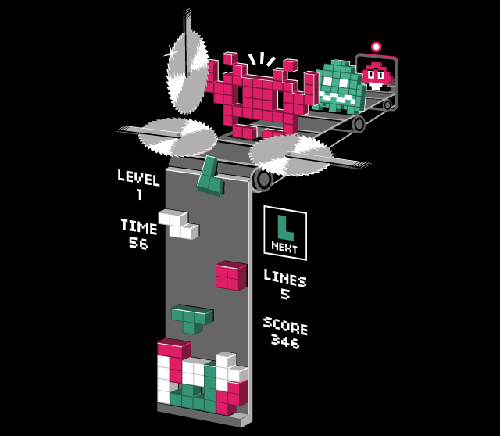“The other day I heard that people are getting ‘font paralysis’. They couldn’t move forward with their work because they were unable to decide on which font to use.”
Month: July 2010
Helvetica is a inferior quality vanilla ice cream, one made
Helvetica is a inferior quality vanilla ice cream, one made with water, vanilla extract and vegetable fats instead of real double cream, proper vanilla pods and all. It’s why I don’t use Helvetica but always go for better quality.
Interface Overload
Derek Punsalan examines the interface choices available in a selection of washing machines, or as he puts it, not going into orbit, just looking for clean clothes. We’re a long way removed from the relative simplicity of the old machines, although one of their added features involved losing an arm. Innovation isn’t just about incremental improvements and greater safety, it means more features, more buttons and more blinky lights.

The article reminded me of an exam question in a human-computer interaction course that I took years ago. We were asked to describe the best user interfaces that we had encountered. I chose to describe the space-heater in my room, it was great. The machine had one button, one switch and a few LEDs. You pressed the button to turn it on. The LEDs indicated the current temperature, and you pressed the button again to cycle through them. The switch on the base allowed the heater to rotate. After moving to an exceedingly hot top-floor apartment, I no longer needed the heater. So, I lent it to a friend’s housemate, who decided to dry clothes on the wee thing. It blew up. Although she was lacking in the brain department, the girl still has all of her limbs.
I’m still a fan of minimal hardware interfaces, with Apple handhelds being the obvious example. Another one of my favourites are the basic CrockPot models — one switch with three settings (off, high, low). Although, they’ve tried to muck things up with all manner of digital crap. But that’s progress.
Sledgehammer and whore
Sledgehammer and whore, a great story from a screenwriter named Josh, which details an unusual break-in at his office and how it could be pitched as a show.
Vintage firing control computer
A US Navy training film describing the mechanical computing involved in vintage firing control mechanisms.
Street-fighting Mathematics
Sanjoy Mahajan’s book, Street-fighting Mathematics, is about the art of educated guessing and opportunistic problem solving.
In problem solving, as in street fighting, rules are for fools: do whatever works—don’t just stand there! This engaging book is an antidote to the rigor mortis brought on by too much mathematical rigor, teaching us how to guess answers without needing a proof or an exact calculation.
The book is available in traditional dead-tree format and also for download under a Creative Commons license.
Degrading Helvetica by Patrick Branigan A paper landscape created to
Degrading Helvetica by Patrick Branigan
A paper landscape created to comment on the consequences of the visual world becoming oversaturated with the font Helvetica.
Dieter Rams ethos
A video about the design ethos of Dieter Rams.
MacPaint source
Apple has donated the the MacPaint source code to the Computer History Museum. Bill Atkinson was responsible for the code, including QuickDraw, which formed a large portion of the MacOS.
A reporter asked Steve Jobs, “How many man-years did it take to write Quick Draw?” Steve asked Bill, who said, “Well, I worked on it on and off for four years.” Steve then told the reporter, “Twenty-four man-years”. Obviously Steve figured, with ample justification, that one Atkinson year was the equivalent of six ordinary programmer years.
The main source is written in Pascal, and is quite beautiful to read — you can tell that he took pride in it. The rest of the code is written in assembler language for the 68000 processor.
Riepl’s Law
In 1913, Wolfgang Riepl, chief editor and a Nuremburg daily, made this statement in his dissertation concerning ancient modes of news communications.
New, further developed types of media never replace the existing modes of media and their usage patterns. Instead, a convergence takes place in their field, leading to a different way and field of use for these older forms.
The old doesn’t necessarily die out. In some instances, the old methods are absorbed or recycled into a new form. In others cases, those methods are refined and distilled down to their essence.
SEO optimized headline
Gene Weingarten on the current state of print journalism and its bastardization online.
Call me a grumpy old codger, but I liked the old way better. For one thing, I used to have at least a rudimentary idea of how a newspaper got produced: On deadline, drunks with cigars wrote stories that were edited by constipated but knowledgeable people, then printed on paper by enormous machines operated by people with stupid hats and dirty faces.
The article skewers the online practice of writing headlines for machines, rather than readers. A good headline will likely garner just as much attention after being picked up by a human, and subsequently blogged, liked, retweeted and carrier-pigeoned, as it would from being a top search query.
Tetris origins
Let the Game Continue, for those that were curious where Tetris pieces originated. The graphic is from a t-shirt by Eduardo San Gil at Threadless.


